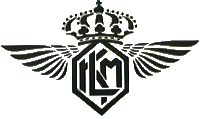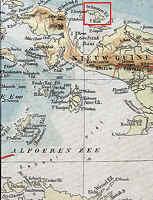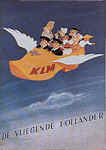

The Flying Dutchman
KLM Super Constellation Neutron
crash at Biak, West New Guinea in 1957.

Of the 18 or maybe 22 Super Constellations KLM has operated, they crashed at least three. Apart from Triton and Nijmegen, on the same Shannon-Gander route, their Super Constellation PH-LKM on flight #607E crashed into the Atlantic, 100 miles NW of Galway Bay, Ireland, causing all 91 passengers and 9 crew to die (August 14,1958). Possible cause was overspeeding of an outer propeller. It figures that they are not very forthcoming with information on all this. The Roermond, in 1949 observed from Bari, Italy, to explode into flames and plummet into the Mediterranean Sea from an altitude of 5000m while captained by KLM director's son J.C. Plesman, like the Nijmegen, was a regular Constellation.
The Crash
This is the most outrageous story of all KLM crashes I have looked at: a scandal and a disgrace.
Stories even have been circulating that the crew had been drinking alcohol. Judge the facts for yourself.

Biak island
N. Australia at extreme South
Bos-Niermeyers Atlas der Geheele Aarde
Groningen, den Haag, Batavia 1932
Flight 844 with final destination Amsterdam made a perfectly normal take-off at 03:33. Shortly after take-off captain de Roos of PH-LKT asked the tower controller to keep the runway lights on, requesting permission for a low run over the airfield. Both requests were granted. This was the last communication with the aircraft. The tower had no voice recording equipment. A traffic controller left the tower to shout to the people waiting:
He's making a low pass!
One minute before the crash, the captain used the PA system to inform the passengers they would get one last glimpse of the Biak lights before continuing to Manila, Philippines. The aircraft was seen to flash landing lights on and off while making a 180 degree turn over Owi island at about 1000ft (300m), but gradually lost altitude until it hit the sea and broke apart in two or three pieces, to burst into an
enormousfire with a sound like a bomb exploding. It sank almost immediately in 250m of water.
Papuas went out on the night sea in their canoes and managed to rescue 12 passengers, of whom 2 died later. All 9 crew members and 49 passengers died. It was the largest disaster in KLM's history till then.

last flight of the Neutron
The Dutch Rijks Luchtvaart Dienst (equivalent of the Aeronautic Safety Board) concluded that aircraft was in good technical condition; there was nothing wrong with the crew, loading of the aircraft or weather conditions. The Board thought that the aircraft had started coming down from 300m tot 150m for the low pass at a rather early stage; it would have been impossible to see the airport lights from a height of 50-75 m because of the vegetation. The Board could not understand why the pilot would have continued his descent under these conditions, and concluded that, even had there been some technical failure, the pilot's reaction to it might have been wrong.Remember: This was in 1957, only one year before Pan American started their first trans oceanic services with Boeing 707 jets. Even if they would never have pulled this trick at Idlewild or Schiphol, or even Curaçao, at the time, it seems incredible that KLM Super Constellation captains were then still using that cowboy style of flying when given a chance. Captain de Roos seems to have been known to have a
The Board concluded thatlow run passesshould be avoided in normal line flights.The magnitude of the danger that is inherent in the proximity of the ground on takeoff and landing should not be increased unnecessarily by flying at low altitude.KLM then sent out a directive to all flyers to that effect.
predilection for low passes with many lights on.
Not watching the cockpit instruments but relying on visual observations can kill you fast: The aircraft gradually lost height and hit the water. It also happened to Viruly in Shannon, and to many others.
In February 2000 a request was made to reopen the investigation because of accounts regarding the possibility that the crew had been drinking alcoholic beverages prior to the flight. Family of the captain in question also wanted the investigation to be reopened to clear his name.
The complete pronouncement of the Board of Inquiry (in Dutch)

Amateur Night
In 1954 KLM's captain-writer Viruly lost Super Constellation Triton at Shannon, Ireland.
The 1948 Nijmegen crash at Prestwick, Scotland.
How Loftleidir almost killed me.
 | Airline Nostalgia Classic Aircraft in Color by Adrian Balch    |
SEARCH this site or the Web

all material on this site, except where noted
copyright © by , curaçao
reproduction in any form for any purpose is prohibited
without prior consent in writing